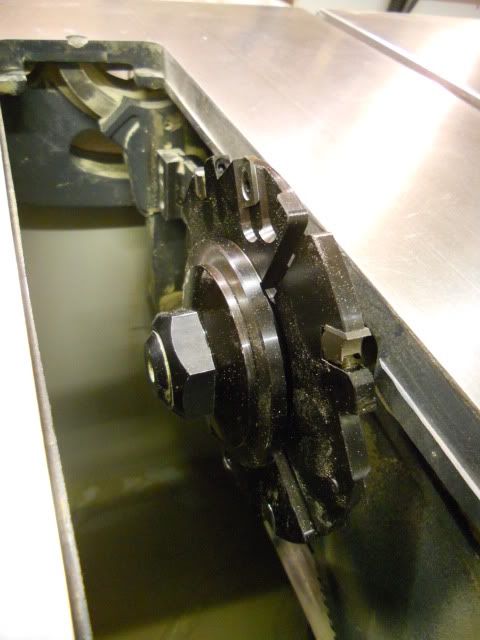Einsteinsdog
New member
Apologies if this question has been dealt with previously.
I'm a newbie to woodworking and have just bought my first table saw. My question is regarding table saw safety and I'd be keen to hear the advice of other more experienced woodworkers as to the best way forward.
I have read quite a lot about table saw safety and have heard quite a number of conflicting reports regarding removing the riving knife and saw cover. From one point of view the majority of woodworkers appear not to use the riving knife and cover apart apart from at certain times, and from another camp the idea of removing it appears to be tantamount to letting your child play with a loaded shotgun. On a similar note I asked tech-support at Charnwood whether their saw was compatible with a stacked dado and the guy nearly blew up at me over the phone for being so stupid! There appears to be a vast difference of opinion on these things.
I was faced with a dilemna today in my shop where I was trying to create dado slots in MDF. My first thought was to remove the riving knife and cover for this operation, clamp the piece to the sliding carriage and use the table saw using mulitple passes, however hearing "don't be am idiot" in my head made me us a less accurate cross-cutting saw to complete the operation instead. This kind of did the job but was a bit shaky to say the least. I am keen to be safe in the shop as of course I like my hands the way they are, but am I being over the top? I bought the saw with the idea that I could use it for loads of cuts but I appear now to be limited to ripping and cross-cutting only if I don't remove the riving knife.
+ So is it acceptable to EVER remove the riving knife or cover?
+ If so, which types of cut are acceptable?
+ What pre-cautions should I be aware of?
+ Is a stacked dado truely a mental idea?
Any help here would be great.
Matt
I'm a newbie to woodworking and have just bought my first table saw. My question is regarding table saw safety and I'd be keen to hear the advice of other more experienced woodworkers as to the best way forward.
I have read quite a lot about table saw safety and have heard quite a number of conflicting reports regarding removing the riving knife and saw cover. From one point of view the majority of woodworkers appear not to use the riving knife and cover apart apart from at certain times, and from another camp the idea of removing it appears to be tantamount to letting your child play with a loaded shotgun. On a similar note I asked tech-support at Charnwood whether their saw was compatible with a stacked dado and the guy nearly blew up at me over the phone for being so stupid! There appears to be a vast difference of opinion on these things.
I was faced with a dilemna today in my shop where I was trying to create dado slots in MDF. My first thought was to remove the riving knife and cover for this operation, clamp the piece to the sliding carriage and use the table saw using mulitple passes, however hearing "don't be am idiot" in my head made me us a less accurate cross-cutting saw to complete the operation instead. This kind of did the job but was a bit shaky to say the least. I am keen to be safe in the shop as of course I like my hands the way they are, but am I being over the top? I bought the saw with the idea that I could use it for loads of cuts but I appear now to be limited to ripping and cross-cutting only if I don't remove the riving knife.
+ So is it acceptable to EVER remove the riving knife or cover?
+ If so, which types of cut are acceptable?
+ What pre-cautions should I be aware of?
+ Is a stacked dado truely a mental idea?
Any help here would be great.
Matt


































